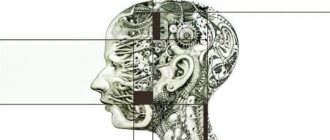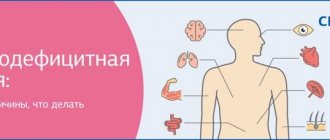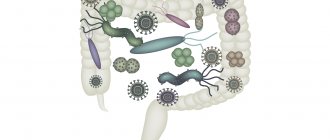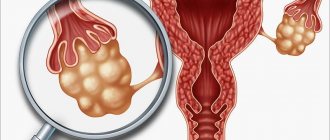What is metabolism
The content of the article
Metabolism refers to chemical processes that occur around the clock and continuously in the organisms of living beings. During sleep, the metabolic rate decreases. If you try to break down the metabolic process into blocks, you will get the following algorithm:
- Eating;
- Absorption of prepared nutrients by the digestive tract;
- Transporting substances to organs in need;
- Absorption of substances by organs;
- The breakdown of substances that did not go through the previous stages and their removal from the body.
Metabolism is unthinkable without “helpers”. Building material is created based on proteins. The balance of energy expenditure is regulated by fats and carbohydrates. Chemical reactions require a favorable environment, which is supported by vitamins and minerals.
The human body is constantly engaged in the synthesis, construction and breakdown of substances. This releases energy. When everything is in order with the metabolism, a balance arises between what was built and what was destroyed. If there is no balance, it is worth thinking about the reasons.
The connection between metabolism and weight
Previously, we already looked at the relationship between metabolic rate and human weight. As practice shows, metabolic rate affects weight. And metabolic disorders can cause the following pathological changes:
- Changes in cholesterol balance in the body. This leads to the deposition of cholesterol plaques on the walls of the arteries, which complicates the functioning of the heart and internal organs, leading to the development of diseases of the cardiovascular system. As a result, mobility decreases, which leads to weight gain.
- Changes in water-salt balance. This leads to excessive fluid content or dehydration. In an attempt to restore water balance, the body can remove excess beneficial minerals and vitamins, which will lead to vitamin deficiency, then to exhaustion, and later to powerful catabolic optimization processes.
- Change in metabolic rate. Very often, after heavy diets, you can observe a sharp decrease in metabolic rate, simultaneous burning of muscle tissue and gain of fat. All this is due to the fact that the body perceives the next diet as starvation and strives to make up for lost time.
- Changes in protein balance. Usually, this leads to disruption of the processes of breakdown and absorption of proteins in the body. Associated with changes in the alkaline-acid balance in the stomach. It has complex consequences in the form of a general metabolic disorder (source – Wikipedia”).
- Changes in lipid balance. A change in lipid balance leads to the deposition of all energy into fat reserves. In addition to increasing body weight, excess fat leads to the development of atherosclerosis and liver disease.
As you can see, almost any diet that is not based on basic calorie principles and not balanced in nutrients can lead to these complications. As a result:
- Increase in body fat;
- Diseases of the cardiovascular system;
- Hormonal imbalance;
- Autonomic dysfunctions;
- Complete exhaustion of the body.
Therefore, it is very important to understand how to quickly restore metabolism if it is disrupted.
Why does metabolic disorder occur?
- The presence of disease has a strong impact on metabolism. Diseases of the intestines and the entire digestive tract: gastritis, ulcers, pancreatitis, hepatitis, endocrine system disorders: diabetes, thyroid disorders - cause disturbances in metabolic processes.
- A person's lifestyle affects metabolism. The nutritional system, variety of rest, and physical activity affect metabolic processes.
- If you have constant stress in your life, metabolic imbalance begins. Therefore, it is extremely important to learn how to cope with stress. In addition, stress often gets eaten up, which inevitably brings the stage of obesity closer.
- The lack of healthy fats in food causes metabolic disorders at the chemical level. The body has to utilize large portions of Omega-6 oils and experiences a deficiency of Omega-3 oils. It is extremely important to keep the consumption of sunflower, corn and butter oils, lard, and sausages within reasonable limits. But products with Omega-3 need to be introduced into your diet more often: olive and flaxseed oil, marine fish oil. By creating a balance of fats, you will protect your body from atherosclerosis, hypertension and disruptions in blood microcirculation.
- Low physical activity, unreasonable alcohol consumption, and smoking negatively affect metabolism.
- Heredity causes metabolic problems. Sometimes, even if you follow all the above recommendations, metabolic problems cannot be avoided. The reason for this is metabolic disorders inherited.
Disorders of carbohydrate metabolism
Carbohydrates compensate for energy costs after physical and mental stress, as well as stressful situations. Energy production does not occur without glucose, one of the most important carbohydrates, and disturbances occur when its level in the blood increases or, conversely, decreases. Thus, pathologies can be divided into two types: deficiency or excess.
You can learn more about nutrition rules and the principles of forming a reasonable diet in a
7-module certification course in dietetics and nutrition from leading nutritionist Oleg Iryshkin.
Disorders of carbohydrate metabolism occur for the following reasons:
- hereditary factors due to which certain enzymes are not synthesized in the body;
- disruptions in liver function;
- hormonal imbalance;
- the presence of tumors in the body;
- pathologies of the circulatory system;
- poisoning with toxic substances;
- poor nutrition;
- frequent stressful situations;
- excessive physical activity.
Symptoms
| Excessive type of violations | Insufficient type of violation |
| High emotional and physical activity | Constant drowsiness, general weakness |
| Hypertension, heart and vascular diseases | Trembling fingers |
| Tremor of limbs, tremors in the body | Dyspnea |
| High blood glucose levels | Dizziness |
| Constant thirst, dry mouth | Increased concentration of ketone bodies and acetone, which is accompanied by vomiting and sometimes coma |
| Depression, indifference to what is happening around | |
| Low blood glucose levels |
Free consultation on training issues
Our consultants are always ready to tell you about all the details!
With an excess of carbohydrates, diabetes mellitus, obesity, and hyperglycemia often develop; with a deficiency, hypoglycemia and Gierke's disease, in which the body is unable to process glucose.
Symptoms of metabolic problems
The initial stages of metabolic disorders cannot be diagnosed. Common symptoms that are considered minor: drowsiness, headaches, fatigue. All this is not given any importance. Then more serious symptoms are added:
- feeling “broken”, similar to the onset of a cold;
- chronic desire to sleep;
- insomnia;
- brittle nails, dull hair, dry skin, bags under the eyes;
- aching headaches;
- continuous weight gain.
Metabolic restoration
Restoring metabolic processes is a long and difficult task. If the disorder is based on hereditary factors, you cannot do without the help of an endocrinologist. And you shouldn’t put off going to the doctor; the longer you wait to make this decision, the more the imbalance progresses. If lifestyle is to blame for the disturbances, you can independently stop the progression of the disease at an unadvanced stage. For self-improvement, follow the following recommendations:
- Control your fat and carbohydrate intake.
- Regulate your diet;
- Engage in systematic, non-exhausting physical activity;
- Eat fractionally: often in small portions;
- Try to get enough sleep.
How to prevent metabolic problems?
Reducing the risks of metabolic disorders is easy and simple:
- don't skip breakfast;
- drink green tea;
- do morning exercises;
- eat in a calm environment, without TV, phones and showdowns;
- walk more often;
- Provide your body with vitamins and minerals.
Take control of your metabolism and move towards health!
ONLINE REGISTRATION at the DIANA clinic
You can sign up by calling the toll-free phone number 8-800-707-15-60 or filling out the contact form. In this case, we will contact you ourselves.
If you find an error, please select a piece of text and press Ctrl+Enter
Metabolism of proteins, fats and carbohydrates in the body
PURPOSE : To present the general scheme of metabolism in the body, the metabolism of proteins, fats, carbohydrates and the manifestations of the pathology of these types of metabolism.
1. Once in the body , food molecules participate in many different reactions. These reactions, as well as other chemical manifestations of life, are called metabolism, or metabolism. Nutrients are either used as raw materials for the synthesis of new cells, or are oxidized, delivering energy to the body. Some of this energy is needed for the continuous construction of new tissue components. The other part is consumed during the functioning of cells: during muscle contraction, transmission of nerve impulses, secretion of cellular products. The rest of the energy is released as heat.
Metabolic processes are usually divided into anabolic and catabolic. Anabolism (assimilation) refers to chemical processes in which simpler substances combine with each other to form more complex substances, which leads to the accumulation of energy, the construction of new protoplasm and growth. Catabolism (dissimilation) is the breakdown of these complex substances, leading to the release of energy, while protoplasm is destroyed and its substances are consumed.
The essence of metabolism is:
1) in the entry of various nutrients into the body from the external environment;
2) in assimilation and use of them in the process of life as sources of energy and material for the construction of tissues;
3) in the release of the resulting metabolic products into the external environment.
Specific metabolic functions:
1) extraction of energy from the environment in the form of chemical energy of organic substances;
2) transformation of exogenous substances into building blocks, i.e. precursors of macromolecular components of the cell;
3) assembly of proteins, nucleic acids and other cellular components from these building blocks;
4) synthesis and destruction of those biomolecules that are necessary to perform various specific functions of a given cell.
2. Protein metabolism is a set of plastic and energetic processes of protein transformation in the body, including the exchange of amino acids and their breakdown products. Proteins form the basis of all cellular structures and are the material carriers of life. Protein biosynthesis determines the growth, development and self-renewal of all structural elements in the body and thereby their functional reliability. The daily protein requirement (protein optimum) for an adult is on average 100-120 g (with an energy expenditure of 3000 kcal/day).
The body must have all amino acids (20) at its disposal in a certain ratio and quantity, otherwise protein cannot be synthesized. Many amino acids that make up protein (valine, leucine, isoleucine, lysine, methionine, threonine, phenylalanine, tryptophan) cannot be synthesized in the body and must be supplied with food. This is the so-called essential amino acids. Other amino acids can be synthesized in the body and are called non-essential (12: glycocol, alanine, glutamic acid, proline, hydroxyproline, series, tyrosine, cysteine, arginine, histidine, etc.). Proteins are divided into biologically complete (with a full set of all eight essential amino acids) and incomplete (in the absence of one or more essential amino acids).
The main stages of protein metabolism are:
1) enzymatic breakdown of food proteins into amino acids and absorption of the latter;
2) transformation of amino acids;
3) protein biosynthesis;
4) protein breakdown;
5) the formation of end products of amino acid breakdown.
Having been absorbed into the blood capillaries of the villi of the mucous membrane of the small intestine, amino acids enter the liver through the portal vein, where they are either immediately used or retained as a small reserve. Some amino acids remain in the blood and enter other cells of the body, where they are included in new proteins. Body proteins are continuously and rapidly broken down and synthesized anew. The period of renewal of total protein in the body is 80 days in humans. If food contains more amino acids than is necessary for the synthesis of cellular proteins, liver enzymes cleave NH2 amino groups from them, i.e. perform deamination.
Other enzymes, combining split-off amino groups with CO2, form urea from them, which is transported through the blood to the kidneys and excreted in the urine. The carbon chains of some amino acids, called "glucogenic" amino acids, can be converted into glucose or glycogen; the carbon chains of other amino acids – “ketogenic” – produce ketone bodies. Proteins are practically not deposited in the depot, so the proteins that the body uses after depleting its reserves of carbohydrates and fats are not reserve proteins, but enzymes and structural proteins of cells.
Disorders of protein metabolism in the body can be quantitative and qualitative. Quantitative changes in protein metabolism are judged by nitrogen balance, i.e. according to the ratio of the amount of nitrogen entered into the body with food and excreted from it. Normally, in an adult with adequate nutrition, as a rule, the amount of nitrogen introduced into the body is equal to the amount of nitrogen removed from the body (nitrogen balance). When nitrogen intake exceeds its excretion, we speak of a positive nitrogen balance, and nitrogen retention occurs in the body. It is observed during the period of growth of the body, during pregnancy, and during recovery. When the amount of nitrogen excreted from the body exceeds the amount taken in, we speak of a negative nitrogen balance. It is observed with a significant decrease in protein content in food (protein starvation).
Qualitative changes in protein metabolism lead to changes in the structure of cells and tissues - protein dystrophies - dysproteinoses.
3. Fat metabolism is a set of processes for converting lipids (fats) in the body. Fats are energy and plastic material; they are part of the membrane and cytoplasm of cells. Part of the fat accumulates in the form of reserves, constituting 10-30% of body weight. The bulk of fats are neutral lipids (triglycerides of oleic, palmitic, stearic and other higher fatty acids). The daily requirement for fats for an adult is 70-100 g. The biological value of fats is determined by the fact that some unsaturated fatty acids (linoleic, linolenic, arachidonic), necessary for life, are essential and cannot be formed in the human body from other fatty acids, therefore, they must be supplied with food (vegetable and animal fats). The daily requirement for essential fatty acids for an adult is 10-12 g.
The main stages of fat metabolism are:
1) enzymatic breakdown of food fats in the gastrointestinal tract to glycerol and fatty acids and absorption of the latter in the small intestine;
2) the formation of lipoproteins in the intestinal mucosa and in the liver and their transport in the blood;
3) hydrolysis of these compounds on the surface of cell membranes by the enzyme lipoprotein lipase, absorption of fatty acids and glycerol into cells, where they are used to synthesize the own lipids of organ and tissue cells. After synthesis, lipids can undergo oxidation, releasing energy, and ultimately turn into carbon dioxide and water (100 g of fat yields 118 g of water upon oxidation). Fat can be transformed into glycogen and then undergo oxidative processes similar to carbohydrate metabolism. When there is excess fat, it is deposited as reserves in the subcutaneous tissue, greater omentum, and around some internal organs.
With foods rich in fat, a certain amount of lipoids (fat-like substances) - phosphatides and sterols - comes in. Phosphatides are necessary for the body to synthesize cell membranes; they are part of the nuclear substance and cytoplasm of cells. Nervous tissue is especially rich in phosphatides. The main representative of sterols is cholesterol. It is also part of cell membranes and is a precursor to hormones of the adrenal cortex, gonads, vitamin D, and bile acids. Cholesterol increases the resistance of red blood cells to hemolysis and serves as a kind of insulator for nerve cells, ensuring the conduction of nerve impulses. The normal content of total cholesterol in blood plasma is 3.11-6.47 mmol/l.
The pathology of fat metabolism most often manifests itself in a general increase in neutral fat in the body, called general obesity (obesity). The reason for this may be neuroendocrine disorders, as well as excess nutrition, alcoholism, and a sedentary lifestyle.
4. Carbohydrate metabolism is a set of processes for converting carbohydrates in the body. Carbohydrates are sources of energy for direct use (glucose) or form an energy depot (glycogen), and are components of a number of complex compounds (nucleoproteins, glycoproteins) used to build cellular structures. The daily carbohydrate requirement of an adult is 400-500 g.
The main stages of carbohydrate metabolism are:
1) breakdown of food carbohydrates in the gastrointestinal tract and absorption of monosaccharides in the small intestine;
2) storage of glucose in the form of glycogen in the liver and muscles or its direct use for energy purposes;
3) breakdown of glycogen in the liver and the entry of glucose into the blood as it decreases in the blood (glycogen mobilization);
4) synthesis of glucose from intermediate products (pyruvic and lactic acids) and non-carbohydrate precursors;
5) conversion of glucose into fatty acids;
6) oxidation of glucose to form carbon dioxide and water.
Carbohydrates are absorbed in the digestive canal in the form of glucose, fructose and galactose. They enter the portal vein into the liver, where fructose and galactose are converted into glucose, which accumulates in the form of glycogen (a polysaccharide). The process of glycogen synthesis in the liver from glucose is called glycogenesis (the liver contains about 150-200 g of carbohydrates in the form of glycogen). Part of the glucose enters the general bloodstream and is distributed throughout the body, used as the main energy material and as a component of complex compounds (glycoproteins, nucleoproteins).
Glucose is a constant component (biological constant) of blood. The normal glucose content in human blood is 4.44-6.67 mmol/l; when its content increases (hyperglycemia) to 8.34-10 mmol/l, it is excreted in the urine in the form of traces. When the level of glucose in the blood decreases (hypoglycemia) to 3.89 mmol/l, a feeling of hunger appears, and when the level of glucose in the blood drops to 3.22 mmol/l, convulsions, delirium and loss of consciousness (coma) occur.
When glucose is oxidized in cells to produce energy, it is eventually converted into carbon dioxide and water. The breakdown of glycogen in the liver to glucose is glycogenolysis. The biosynthesis of carbohydrates from their breakdown products or breakdown products of fats and proteins is gliconeogenesis. The breakdown of carbohydrates in the absence of oxygen with the accumulation of energy in ATP and the formation of lactic and pyruvic acids is glycolysis.
When glucose supply exceeds demand, the liver converts glucose into fat, which is stored in fat stores and can be used in the future as a source of energy.
Disruption of normal carbohydrate metabolism is manifested by an increase in blood glucose. Constant hyperglycemia and glycosuria associated with a profound disturbance of carbohydrate metabolism is observed in diabetes mellitus. The disease is based on insufficiency of the endocrine function of the pancreas. Due to the lack or absence of insulin in the body, the ability of tissues to use glucose is impaired, and it is excreted in the urine.










